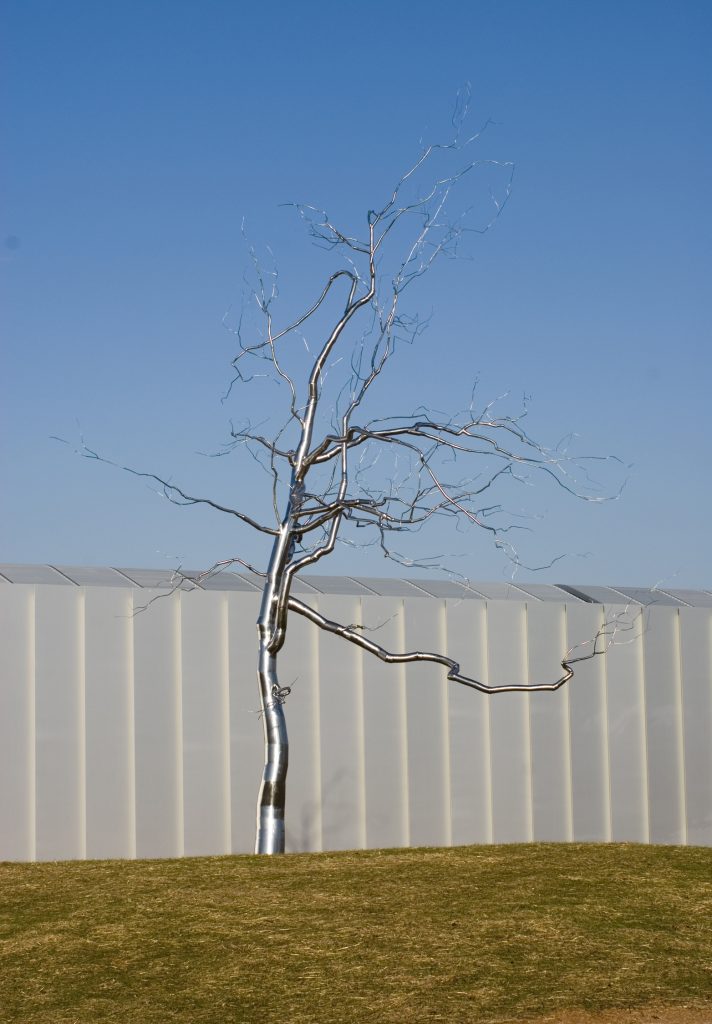Roxy Paine (artist)
Paine’s works focus on the place of nature in contemporary culture and can provoke thoughts about...
view artistStudents will examine trees and create tinfoil sculptures of trees that can stand on their own.

Askew, by Roxy Paine
Introduction/ Warm-Up
Focus Activity Procedure
Closing
Written by Andrea Saenz Williams
Vocabulary
tinfoil
Materials
Tinfoil
small branches (collected from outside)
3” florist foam or other foam, marker
Extension Activities for Teachers
Extension Activities for Families
Suggested Books for the Classroom Library
Luxbacher, Irene. 1 2 3 I Can Sculpt! Kids Can Press, 2007. [ISBN 973-1-55453-038-0]
Raczka, Bob. 3-D ABC: A Sculptural Alphabet. Millbrook, 2007. [ISBN 978-0-7613-9456-3]
Thomas, Isabel. Sculpting. Heinemann Library, 2005. [ISBN 978-1-40346-921-2]
Thomas, Isabel. Sculptures. Heinemann Library, 2012. [ISBN 978-1-43295-017-0]
Wallace, Nancy Elizabeth., and Linda K. Friedlander. Look! Look! Look! At Sculpture. Marshall Cavendish, 2012. [ISBN 978-0-7614-6132-6]
Paine’s works focus on the place of nature in contemporary culture and can provoke thoughts about...
view artist